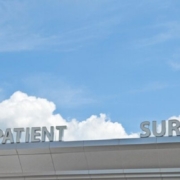Investor Demand For Medical Office Buildings Has Gone Global
Demand for medical office properties is so strong, even foreign investors alien to the American healthcare system are shopping for them
“Investors from Singapore and Australia are shifting capital to the U.S. to invest in medical real estate,” CBRE Vice Chairman Lee Asher said during Bisnow’s Atlanta State of Healthcare event last week.
But as they come, Asher said he is spending more time educating foreign investors on the ins and outs of the American healthcare system.
“The foreign capital, it takes them about two years to understand how healthcare works in the U.S.,” Asher said. “There’s plenty of new capital, but the key is they need domestic operating players.”
Asher was among medical real estate experts at the event who discussed a wide range of topics affecting the industry, from the surge of new medical office construction and the merger mania occurring within the healthcare industry to the effects of the possible dismantling of Georgia’s certificate of need system.
Of course, foreign players are only a portion of the investors seeking stakes in medical office real estate. But increasing revenues, merger and acquisition activity and overall health system growth has been attracting investors from Asia, Europe, the Middle East and even Africa and Latin America, Modern Healthcare recently reported.
According to a 2019 Marcus & Millichap report, medical office sales had their largest growth in transaction velocity, at 13%, since 2015, nearly double the rate compared to other commercial property investments.
“Hospital-affiliated facilities and outpatient surgery centers with long leases and annual rent increases are most desirable, with initial returns ranging in the mid-5% to 7% span,” Marcus & Millichap officials said in the report.
Part of medical office’s attraction is its stability. Panelists said during the Great Recession, those investments largely remained untouched by the overall real estate malaise. Investors today see the sector as one of the best to weather economic downturns, especially as baby boomers age and require more healthcare.
“Also, many of the tenants — especially tenants with lots of medical equipment, like imaging groups or cancer treatment centers — book long leases and rarely, if ever, undergo the headaches of a relocation,” MB Real Estate Services Senior Vice President Brian Burks said.
Ackerman & Co. President Kris Miller said when his firm first started to develop medical office campuses more than two decades ago, it required a significant amount of personal capital and hard work to find investors. Today, the story is completely different.
“We all know racetracks make money, but it’s hard to find a banker who is going to finance one, and that was true with medical office,” Miller said. “There are just so many people who want to buy this right now. We can sell every medical office asset we stabilize, and we can sell that asset 10 times at roughly the same price.”
“Construction costs are complicating the growth of physicians and hospital groups. Even with developers willing to capitalize and build new medical facilities for tenants, the groups still need to have the financial wherewithal to handle the higher rents,” HealthAmerica Realty Group CEO Tommy Tift said. “That is probably our biggest challenge, and also that will be physicians’ … biggest challenge.”
Source: Bisnow











Leave a Reply
Want to join the discussion?Feel free to contribute!